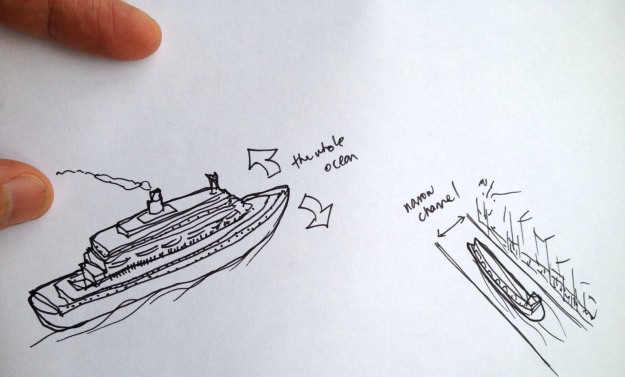Turning the Houseboat
JOHN MAEDA

I have a friend who shared with me a story of a friend she recently reconnected with after many years. This person, call her “Ann,” now lives in a houseboat in Europe at the age of 58. Ann loves her life of constant mobility. The boat she now lives in is long and thin — measuring “52-feet” long.
Apparently it’s not easy navigating narrow channels and locks, and it is especially difficult to make turns because the boat is so long. She has to do a lot of planning to ensure that a certain minimum arc exists to make a turn happen without capsizing. I thought of the complex kind of slow, concerted motions she would need to carefully make a turn.
My mind then turned to the analogy that is often used for leaders that run organizations — one of trying to “turn the ship” so as to avoid a giant, looming iceberg out there. We usually think of the ship as being this big, big, big cargo freighter of sorts and with the thought trying to make a sharp turn as being nearly impossible. We’re often told, “If you can turn a large ship even a few degrees left or right then you have made your mark as a leader.” The implicit assumption (at least for me) is that you are in an oceanliner in the middle of the big, blue ocean with no land in sight.
Turning back to the 52-foot long houseboat, it’s clear that turning that houseboat isn’t easy at all. Because it’s not sitting in the middle of the ocean. And land is all around you constraining your movements. It’s sitting within a set path of channels that narrow and widen at will, and often with a great deal of other boats vying for equally safe passage. Ann’s houseboat made me think that her boat is a more realistic analogy for the day-to-day challenges a leader faces. So in the future when I hear about how leaders are often challenged with the task of turning the ship (essentially in an obstructionless ocean), I’ll be thinking of Ann’s houseboat making its way through the crowded, narrow channels of Europe’s waterways. -JM
No comments:
Post a Comment